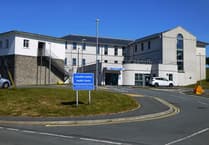Following their AGM on 14 April. Tywyn & District History Society enjoyed two informative presentations by residents on the history of their village.
The longer talk, by treasurer David Harrison, was a very well-researched and illustrated account of the history and development of Llwyngwril from the Iron Age to the present. It was a wide-ranging portrait, broad in its scope, but meticulous in its detail.
There were three striking elements of change: first the relocation of the village, beginning its life high above the present location was moved to the coast to ensure a ready supply of water.
In the seventeenth century a large population of Quakers sought refuge from religious persecution and settled. Their burial ground, still a noted feature of the village, is a very rare example.
The third important change was the building of the Cambrian line, when tourism and the building of large villas changed the nature of the village.
Andrew Currie gave a presentation on Abergynolwyn. The village was largely built to house the workers of Bryn Eglwys slate quarry in the nineteenth century. However, it began in much earlier times, when there two small rural settlements. The industrialisation resulted in several shops and chapels, some of which are now private houses. Many contain original timbers of Crimean War vintage and roofing slates from the now disused quarry. Both speakers were warmly thanked.
During the refreshment break artefacts were displayed on a side table relating to Fairbourne and Tywyn. These were informally discussed.
The next meeting on 19 May, the first of the new season, will be a talk by Dr Elizabeth Green entitled 'Old churches in need of friends', at the usual time and venue. Enrolments will continue to be taken. All welcome.




